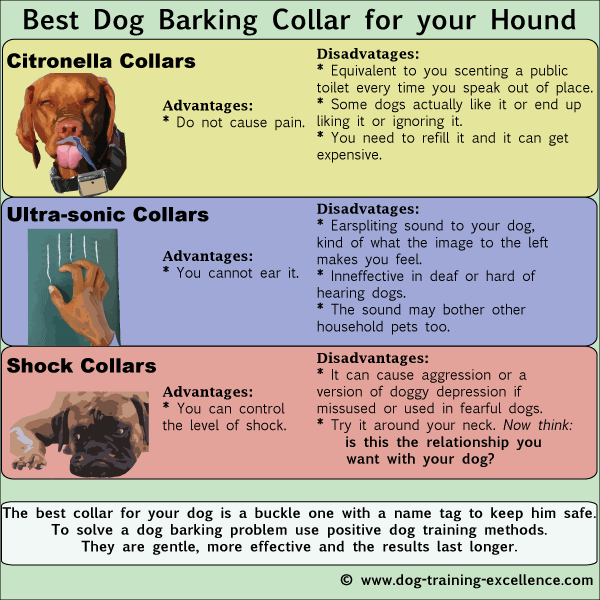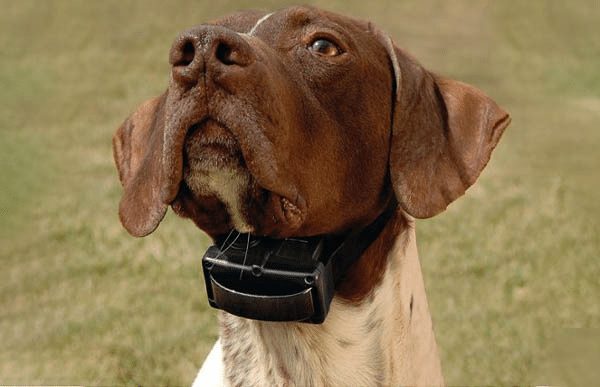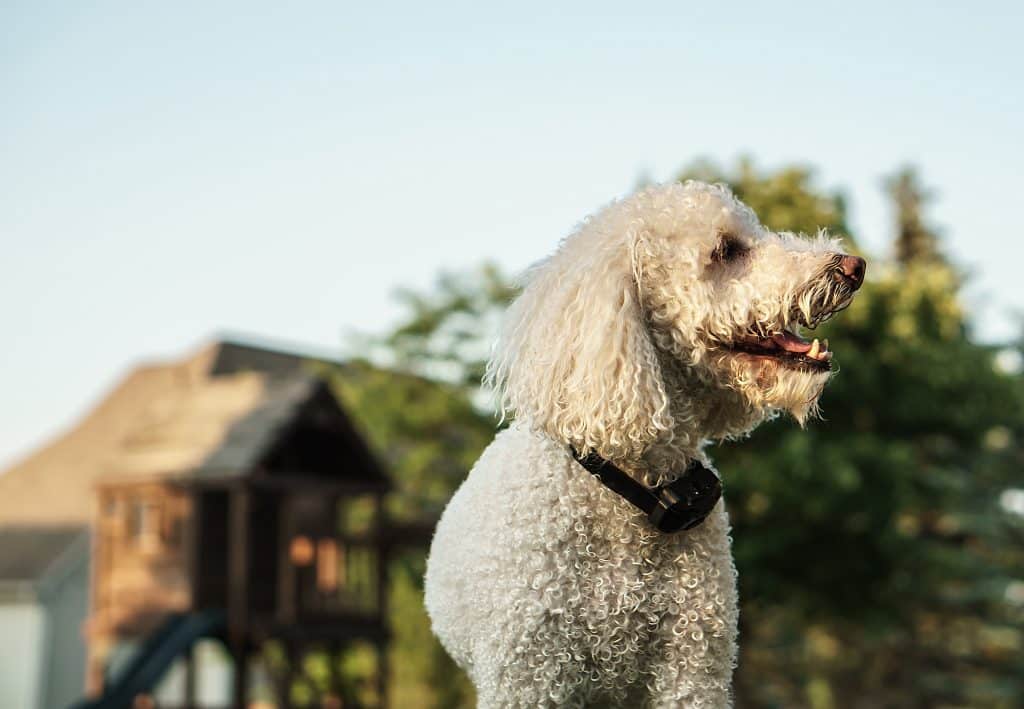Ladies and gentlemen, pet parents, and all the dog enthusiasts out there let us embark on a journey today to unravel the mysteries and wonders of introducing our furry friends to the world of bark collars. We understand that our dogs are our beloved companions, and sometimes, their excessive barking becomes challenging.
So, how can we ease their transition into wearing a bark collar and help them curb their excessive barking? Fear not, dear readers, as we guide you through this delicate process, ensuring a harmonious bond between you and your four-legged friend. Let’s get started!
This image is the property of www.dog-training-excellence.com.
Understanding Bark Collars
Bark collars are a popular tool for training dogs to reduce excessive barking. They come in different types and utilize various methods to deter barking behavior. Understanding the different types of bark collars and how they work is essential for choosing the right one for your furry friend. Additionally, recognizing the benefits of using a bark collar can help you make an informed decision.
Different types of bark collars
Several types of bark collars are available in the market, each with unique features and functionalities. The most common types include spray collars, vibration collars, ultrasonic collars, and static or electric shock collars.
Spray collars release a citronella or unscented spray in response to barking. They are considered humane and safe, as the spray works as a distraction rather than causing any harm to the dog.
Vibration collars, on the other hand, emit gentle vibrations when triggered by barking. These collars are an excellent option for dogs sensitive to sound or hearing impairments.
Ultrasonic collars emit high-frequency sounds that are inaudible to humans but can be heard by dogs. This type of collar captures the dog’s attention and interrupts their barking pattern.
Static or electric shock collars deliver a mild static shock to the dog when they bark excessively. It is important to note that modern static collars have adjustable intensity levels, ensuring the safety and well-being of your pet.
How bark collars work
Bark collars are designed to teach your dog to associate barking with an unpleasant consequence, hence discouraging the behavior. When your dog barks, the collar’s sensor detects the vocal vibrations and triggers a response, such as a spray, vibration, ultrasonic sound, or static correction.
By repeatedly applying the deterrent whenever the dog barks, they understand that barking leads to an unpleasant outcome. Eventually, the dog learns to associate silence with positive experiences and quietness.
Benefits of using a bark collar
Using a bark collar can have numerous benefits for both you and your dog. Firstly, it helps to control excessive barking, providing relief from noise disturbances for you and your neighbors. Excessive barking can strain relationships and lead to unnecessary stress, so a bark collar can help restore peace and harmony.
Moreover, bark collars are a helpful training tool. They teach your dog to communicate effectively and bark only when necessary. The collar provides immediate feedback, allowing your furry friend to understand the desired behavior quickly.
Bark collars are also a safer alternative to other training methods. Unlike prong collars or choke chains, they do not cause physical discomfort or harm to your dog. With proper training and use, bark collars can be an effective and humane option for teaching your dog appropriate barking behavior.
Preparing Your Dog for a Bark Collar
Before introducing a bark collar to your dog, it is crucial to prepare them properly. Taking the necessary steps ensures their comfort and sets the stage for successful training. Here are some key considerations to keep in mind:
Check with a professional
Before using a bark collar, consult a professional dog trainer or veterinarian. They can provide guidance based on your dog’s specific needs and recommend the most suitable type of collar for your furry friend. Professional advice is essential to ensure the collar is used correctly and effectively.
Ensure your dog is comfortable with handling.
It is important to acclimate your dog to being handled around the neck area before introducing a bark collar. Start gently touching and stroking their neck, gradually increasing the duration and pressure. This will help your dog become comfortable with the sensation of wearing a collar.
Gradual exposure to the collar
Introduce the bark collar to your dog slowly. Begin by allowing them to sniff and investigate the collar while it is turned off. This helps to familiarize them with the presence of the collar and reduces any initial anxiety. Use positive reinforcement techniques, such as treats and praise, to create a positive association with the collar.
Gradually increase the duration of the collar being worn, starting with short periods and gradually extending the time. This gradual exposure allows your dog to become accustomed to the collar and prevents them from feeling overwhelmed or stressed.
Choosing the Right Bark Collar for Your Dog
Choosing the suitable bark collar for your dog is a crucial step in training. Consider the following factors to ensure the collar is suitable for your dog’s needs:
Consider your dog’s size and breed
Different bark collars are designed for different sizes and breeds of dogs. It is essential to select a collar that is specifically designed for your dog’s size and weight. Using an ill-fitting collar can be ineffective and uncomfortable for your furry friend.
Select the appropriate correction level.
Bark collars usually have multiple correction levels that can be adjusted based on your dog’s sensitivity and response. Start with the lowest correction level and observe your dog’s reaction. If it seems ineffective, gradually increase the intensity until you find the appropriate level that effectively discourages barking.
Evaluate additional features
Some bark collars come with additional features that can enhance the training experience. For example, some collars have a built-in safety mechanism that prevents the collar from activating for an extended period to ensure your dog’s well-being. Consider these additional features and choose a collar that best meets your dog’s needs.
Familiarizing Your Dog with the Bark Collar
Once you have chosen the appropriate bark collar, it is essential to familiarize your dog with it before actual training begins. This helps create positive associations and reduces your dog’s apprehension. Here are a few steps to familiarize your dog with the bark collar:
Allow your dog to investigate the collar
Before putting the collar on your dog, let them sniff and examine it. This allows them to become familiar with the new object and reduces initial anxiety. Ensure that your dog perceives the collar as something harmless and non-threatening.
Associate the collar with positive experiences.
To create positive associations with the collar, associate it with enjoyable activities. For example, put the collar on before playtime or treat your dog while they wear the collar. This helps your dog form positive connections with the collar, making it more likely for them to accept and tolerate wearing it.
Use treats and rewards during collar introduction.
During the initial stages of introducing the collar, treat and reward your dog while they wear it. This reinforces the positive experience and helps build a strong association between the collar and positive outcomes. Gradually reduce the frequency of treats as your dog becomes more comfortable wearing the collar.
This image is the property of worldanimalfoundation.org.
Initial Use of the Bark Collar
After your dog has become familiar with the bark collar, it is time to start the actual training process. Ensure that you follow these essential steps for a successful and practical experience:
Make sure the collar is fitted correctly
A well-fitting collar is crucial for the proper functioning of the bark collar. It should be snug but not too tight, allowing sufficient contact with your dog’s skin. Ensure you can easily fit two fingers between the collar and your dog’s neck as a general guideline for proper fitting.
Monitor your dog’s behavior closely.
When you first activate the bark collar, closely observe your dog’s behavior and response. Please pay attention to their body language and any signs of distress or discomfort. This allows you to assess the collar’s effectiveness and make necessary adjustments.
Start with shorter wearing periods.
During the initial stages of training, it is recommended to start with shorter periods of collar usage. Begin with just a few minutes and gradually increase the duration over time. This ensures that your dog does not become overwhelmed and helps them adjust to the collar gradually.
Implementing Corrective Measures
Once your dog is accustomed to wearing the bark collar, you can focus on implementing corrective measures to reduce excessive barking. Here are some essential steps to follow:
Identifying the triggers for excessive barking
Understanding the triggers for your dog’s excessive barking is essential for effectively addressing the behavior. It could be anything from doorbells to other dogs or loud noises. Please take note of the situations that lead to excessive barking and strategize ways to manage or minimize their exposure to these triggers.
Setting appropriate correction levels
Set the appropriate correction level on the bark collar based on your dog’s response and sensitivity level. Some dogs may require a higher correction level, while others may respond well to lower levels. The objective is to deter excessive barking without causing discomfort or distress to your dog.
Using consistent commands
Use consistent verbal commands to cue your dog to be quiet in conjunction with the bark collar. For example, use a simple command such as “quiet” or “enough” whenever your dog starts barking excessively. With consistent and clear commands, your dog will learn to associate the command with the expectation of quiet behavior.
This image is the property of www.barkcontrol.com.au.
Reinforcing Training with Positive Reinforcement
Positive reinforcement is critical to the training process when using a bark collar. By rewarding and praising good behavior, you reinforce the desired outcome and encourage your dog to continue displaying appropriate behavior. Here are some ways to reinforce training using positive reinforcement:
Praise and reward good behavior
Whenever your dog remains quiet in response to a trigger, immediately praise them and provide a reward. This can be in the form of treats, affection, or playtime. Positive reinforcement strengthens the desired behavior and motivates your dog to repeat it.
Redirect excessive barking with distractions.
If your dog starts to bark excessively, redirect their attention to an alternative activity or stimulus. For example, you can use a favorite toy or engage them in a game to divert their focus from barking. This teaches your dog that there are more appropriate ways to respond to triggers, ultimately reducing excessive barking.
Avoid punishment or negative reinforcement.
Avoiding punishment or negative reinforcement when using a bark collar is essential. Punishment can lead to fear, anxiety, and aggression, which is counterproductive to the training process. Instead, focus on positive reinforcement and redirection techniques to guide your dog toward desired behavior.
Monitoring and Adjusting the Bark Collar
As your dog continues their training journey with the bark collar, it is necessary to monitor its fit and condition regularly. Additionally, adjustments may be required to ensure its effectiveness. Here are some essential things to consider:
Regularly check the collar’s fit and condition
Check the fit of the bark collar regularly, as dogs can grow or change weight, which may require adjustments. Ensure that the collar is not too tight or loose, as proper fit is crucial for your dog’s efficacy and comfort. Additionally, inspect the collar’s condition and replace worn-out or damaged parts.
Adjust correction levels if necessary.
Evaluation of the collar’s correction levels is an ongoing process. If your dog is not responding to the current correction level, it may be necessary to adjust it accordingly. Gradually increase or decrease the intensity based on your dog’s behavior and progress.
Seek professional advice if issues persist.
If you encounter persistent issues or challenges during training, do not hesitate to seek professional advice. A professional dog trainer or a veterinarian can provide guidance specific to your dog’s needs and help troubleshoot any issues you may be facing. Their expertise can be invaluable in ensuring the success of the bark collar training.
This image is the property of i.ytimg.com.
Additional Training Methods for Excessive Barking
While bark collars can effectively reduce excessive barking, they should be accompanied by additional training methods to address the underlying causes. Here are some additional training methods to consider:
Socialization and environmental enrichment
Exposing your dog to various social situations and environments can help reduce anxiety and stress, which often contribute to excessive barking. Regular walks, visits to the dog park, and supervised interactions with other dogs can aid in socialization. Additionally, providing mental and physical enrichment through puzzle toys and interactive play can help prevent boredom and keep your dog engaged.
Providing mental and physical stimulation
Many dogs engage in excessive barking due to boredom or a lack of mental and physical stimulation. Providing ample opportunities for mental and physical exercise can alleviate these issues. Incorporate activities such as obedience training, puzzle-solving, and interactive games into your dog’s daily routine to help channel their energy positively.
Seeking professional assistance if needed
If you find that your dog’s excessive barking persists despite using a bark collar and additional training methods, it may be beneficial to seek professional assistance. A professional dog trainer or a behavioral specialist can assess your dog’s behavior comprehensively and recommend tailored training techniques to address the underlying causes of excessive barking.
Conclusion
Bark collars can be valuable in training dogs to reduce excessive barking. By understanding the different types of bark collars, preparing your dog for their introduction, choosing the suitable collar, familiarizing your dog with it, and implementing corrective measures, you can effectively teach your furry friend appropriate barking behavior.
Reinforcing training with positive reinforcement, monitoring and adjusting the collar, and utilizing additional training methods when necessary are crucial steps in ensuring the success of bark collar training.
Remember that a bark collar should always be used with positive training techniques and under the guidance of a professional if needed. With patience, consistency, and a gentle approach, you can help your dog become a well-behaved and considerate member of your family and community.
This image is the property of trainingmybestfriend.com.














































